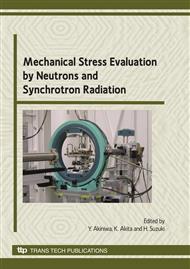p.167
p.174
p.180
p.185
p.191
p.197
p.202
p.210
p.216
Thermal and Mechanical Response of Industrial Porous Ceramics
Abstract:
In this study, the mechanical behavior of porous thermally microcracked ceramics has been compared with that of solely porous materials, under compressive applied stress. The different aspects of the micro and macroscopic stress-strain curves have been inserted into a coherent analytical model and compared with finite element modeling calculations. The agreement between experiments and models is very good. It is shown that mechanical microcracking, as opposed to thermal, introduces an irreversible aspect in the deformation mechanisms of porous ceramics. In this concern, mechanical loads differentiate themselves from thermal cycling. This leads for instance to a change of the Young’s modulus as a function of applied load, which qualifies those materials as visco-elastic.
Info:
Periodical:
Pages:
191-196
Citation:
Online since:
May 2010
Price:
Сopyright:
© 2010 Trans Tech Publications Ltd. All Rights Reserved
Share:
Citation:


